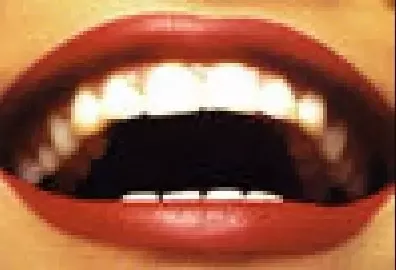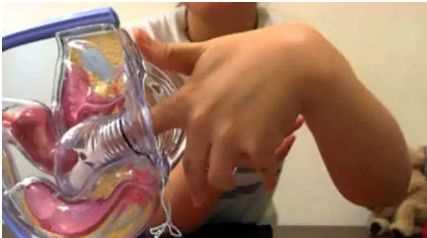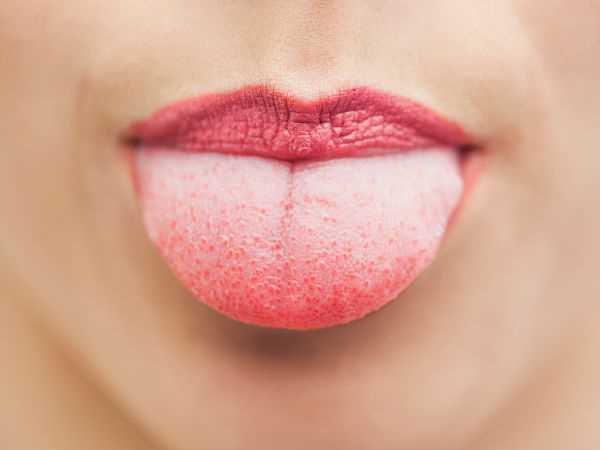
When we think of the dirtiest parts of our bodies, our minds often go to the places that are most visible, such as our hands or faces. However, it turns out that there are other areas that we may not even consider, which are actually teeming with bacteria and grime. Prepare to be shocked as we uncover the filthiest parts of your body.
The first on our list is none other than the human mouth. Yes, your precious pearly whites may not be as clean as you think. The mouth is home to millions of bacteria, including some harmful ones. From the moment you wake up and brush your teeth, to the meals you eat throughout the day, your mouth is exposed to a constant stream of germs. So next time you think about that refreshing morning breath, remember that it may not be as pleasant as you imagine.
As we move further down the body, we encounter another unexpectedly unclean area: the belly button. Our belly button, or umbilicus, is a warm and damp place that provides the perfect environment for bacteria to thrive. Dead skin cells, sweat, and dirt all contribute to the dirty cocktail that can accumulate in our belly buttons, making them a breeding ground for various types of bacteria. So despite being seemingly harmless, our belly buttons can actually be quite filthy.
Last but certainly not least, we come to the common culprit: the feet. Our feet are constantly covered and subjected to pressure, which creates a moist environment that bacteria love. The combination of sweat, dirt, and the warm confines of our shoes can lead to some serious foot funk. From athlete’s foot to fungal infections, our feet can become a hotbed of germs if not properly cared for. So the next time you kick off your shoes, beware of what may be lurking beneath.
Now that you know some of the dirtiest parts of your body, it’s time to take action. Regular hand washing, proper oral hygiene, and keeping your belly button and feet clean and dry are all important steps in maintaining your overall cleanliness and health. Remember, cleanliness is next to godliness, so don’t neglect these surprising areas that can harbor hidden filth.
- The Filthiest Parts of Your Body
- The Hidden World of Bacteria
- The Disgusting Truth about Your Mouth
- The Germs Lurking on Your Hands
- The Dirty Secrets of Your Feet
- Fungal Infections
- Bacteria and Odor
- Corns and Calluses
- The Filthiest Part of Your Body: Belly Button
- The Perfect Hiding Spot for Dirt
- Keeping Your Belly Button Clean
- The Unseen Microbes in Your Genital Area
- The Vaginal Microbiome
- The Penile Microbiota
- Q&A
- What are the filthiest parts of the body?
- Why are the hands considered one of the filthiest parts of the body?
- How can I keep my hands clean?
- Why is the mouth considered one of the filthiest parts of the body?
- How can I maintain oral hygiene?
- What are the dirtiest parts of our bodies?
The Filthiest Parts of Your Body
Our bodies are home to trillions of microorganisms, many of which are harmless or even beneficial. However, there are certain parts of our bodies that harbor more bacteria and germs than others, making them the filthiest parts of our bodies. Here are some of the top contenders:
1. Mouth: The mouth is a warm, moist environment that is perfect for bacteria to thrive. From the tongue to the teeth and gums, there are countless nooks and crannies for bacteria to hide and multiply. Not to mention the fact that we use our mouths to consume food and drink, introducing even more bacteria into the mix.
2. Hands: Our hands come into contact with countless surfaces throughout the day, picking up bacteria and germs along the way. We then use our hands to touch our faces, handle food, and perform various other activities, making them a prime breeding ground for bacteria.
3. Feet: Our feet spend a significant amount of time trapped in socks and shoes, creating a warm and often sweaty environment. This can lead to the growth of bacteria and fungi, causing unpleasant odors and potential infections.
4. Belly Button: The belly button is a moist and relatively secluded area, making it a perfect spot for bacteria to multiply. It is often neglected during bathing, allowing bacteria to accumulate and thrive.
5. Genital Area: The genital area has its own unique ecosystem of bacteria and yeast. With its warm and moist environment, it is no surprise that this area can be a haven for bacteria and other microorganisms.
While these parts of our bodies may harbor more bacteria and germs than others, it is important to remember that not all bacteria are harmful. In fact, many bacteria help to keep our bodies healthy by fighting off harmful microorganisms. By maintaining good hygiene practices, such as regular handwashing and proper cleaning, we can keep these filthiest parts of our bodies under control.
The Hidden World of Bacteria
While bacteria are often associated with dirt and disease, they actually play a crucial role in our daily lives. These microscopic organisms can be found everywhere, from our skin to our guts, and even in unexpected places like the ocean floor or deep within the earth’s crust.
Bacteria are incredibly diverse and come in various shapes and sizes. Some are harmless, while others can cause infections and illnesses. However, not all bacteria are bad for us. In fact, many bacteria are essential for our health and well-being.
Our bodies are home to trillions of bacteria, known as the human microbiota. These bacteria live in and on us, with the majority residing in our gut. They help us digest food, produce vitamins, and even strengthen our immune system.
Bacteria also play a crucial role in maintaining our overall well-being. They help break down waste and provide essential nutrients to plants and animals, contributing to the balance of ecosystems.
In recent years, scientists have discovered that bacteria can communicate with each other through a process called quorum sensing. This allows them to form communities, known as biofilms, which can be found on various surfaces, such as teeth or medical devices. These biofilms can be beneficial in some cases, but they can also lead to infections if not properly managed.
The study of bacteria, known as microbiology, has revealed fascinating insights into their hidden world. Scientists are constantly uncovering new types of bacteria and discovering the many ways in which they interact with the environment and other organisms.
While bacteria may be invisible to the naked eye, they are an integral part of our lives. Understanding their role and how to maintain a healthy balance of bacteria is essential for our well-being.
The Disgusting Truth about Your Mouth
Your mouth might seem clean after a quick brush and floss, but the truth is, it’s actually one of the filthiest parts of your body. From the moment you wake up and take your first breath, bacteria and germs make their way into your mouth, creating a breeding ground for all sorts of unpleasant things.
|
1. Plaque If you’ve ever run your tongue along your teeth and felt a sticky film, that’s plaque. Plaque is a colorless, sticky substance that builds up on your teeth and is caused by the combination of bacteria and food particles. Not only does plaque make your teeth feel dirty, but it can also lead to tooth decay and gum disease. |
|
|
2. Bad Breath Halitosis, or bad breath, is another unpleasant truth about your mouth. Bacteria in your mouth break down food particles and release foul-smelling gases as a result. Poor oral hygiene, certain foods, and other factors can contribute to bad breath. Remember to brush your teeth, tongue, and gums regularly and don’t forget to floss! |
|
|
3. Tartar Tartar, also known as dental calculus, is a hard, yellowish deposit that forms on your teeth when plaque is not adequately removed. Tartar can irritate your gums and contribute to gum disease. Visit your dentist regularly for professional cleanings to keep tartar at bay. |
|
|
4. Tooth Decay One of the most common oral health problems is tooth decay. When you consume sugary or acidic foods and drinks, the bacteria in your mouth produce acids that eat away at your tooth enamel, leading to cavities. Regular brushing, flossing, and dental check-ups can help prevent tooth decay. |
|
So, the next time you brush your teeth, remember that your mouth is anything but clean. Take proper care of it to maintain good oral hygiene and keep it as healthy as possible!
The Germs Lurking on Your Hands
Our hands harbor millions of germs that can cause illness and infection. Despite knowing this, many of us neglect proper hand hygiene, leading to the spread of harmful bacteria and viruses.
One of the most common types of germs found on hands is bacteria. These microorganisms can be transferred through touch and are often responsible for causing illnesses such as diarrhea, respiratory infections, and skin infections. It is crucial to wash your hands thoroughly with soap and water to remove these bacteria.
Another type of germ commonly found on hands is viruses. These tiny infectious agents can survive on surfaces for extended periods, waiting for an opportunity to enter our bodies. They can cause illnesses like the flu, the common cold, and even more severe diseases. Proper hand hygiene, including regular handwashing and using hand sanitizers, can help reduce the spread of these viruses.
Not all germs on hands are harmful, though. Our skin is home to various types of bacteria that help maintain a healthy balance and protect against harmful pathogens. These beneficial bacteria serve as a natural defense system, preventing the colonization of more dangerous microorganisms. It is essential to strike a balance between removing harmful germs and preserving the beneficial ones.
Proper hand hygiene is crucial in reducing the risk of infection and minimizing the spread of germs. The Centers for Disease Control and Prevention (CDC) recommends washing your hands with soap and water for at least 20 seconds, especially after using the restroom, before eating, and after coughing or sneezing. Using hand sanitizers with at least 60% alcohol is an effective alternative when soap and water are not readily available.
In conclusion, our hands can harbor a wide array of germs, both harmful and beneficial. Practicing proper hand hygiene by washing hands regularly and using hand sanitizers can help reduce the spread of harmful bacteria and viruses, keeping us healthier and preventing the transmission of illness to others.
The Dirty Secrets of Your Feet
We often overlook the importance of foot hygiene, but the truth is that our feet can harbor some pretty dirty secrets. From bacteria to fungi, our feet are a breeding ground for all sorts of microorganisms.
Fungal Infections
One of the most common dirty secrets of our feet is fungal infections. Athlete’s foot, for example, is a contagious condition caused by fungi that thrive in warm, moist environments like sweaty socks and shoes. The fungus can be easily passed from person to person or even spread from one area of the body to another.
Another fungal infection that affects the feet is toenail fungus, also known as onychomycosis. This condition causes the nails to become thickened, discolored, and brittle. It can be challenging to treat and often requires long-term management to prevent recurrence.
Bacteria and Odor

Feet provide the perfect environment for bacteria to thrive due to the warm and moist conditions inside our shoes. The bacteria can not only cause unpleasant foot odor but also lead to various infections like cellulitis, a bacterial skin infection that can spread quickly if left untreated.
Proper foot hygiene, such as washing your feet daily, wearing clean and breathable socks, and changing shoes regularly, can help prevent bacterial growth and reduce the risk of infections.
Corns and Calluses

Another dirty secret of our feet is the formation of corns and calluses. These are thickened and hardened areas of skin that develop as a result of repeated friction or pressure on specific areas of the feet. Corns usually develop on the top or sides of the toes, while calluses are more commonly found on the soles of the feet.
While corns and calluses themselves are not harmful, they can cause discomfort and pain, especially if they become inflamed or infected. Proper foot care, including wearing comfortable shoes and using protective padding, can help prevent their formation.
- Remember to wash your feet daily with warm water and soap.
- Dry your feet thoroughly, especially between the toes, to prevent fungal growth.
- Wear clean and breathable socks made of natural fibers to absorb moisture.
- Avoid wearing tight shoes or high heels that can cause pressure points and deformities.
- Trim your toenails regularly and straight across to prevent ingrown nails.
- Moisturize your feet to keep the skin hydrated and prevent cracking.
By paying attention to the dirty secrets of your feet and practicing good foot hygiene, you can keep your feet healthy and free from infections.
The Filthiest Part of Your Body: Belly Button
The belly button, or umbilicus, is often overlooked when it comes to cleanliness, but it can actually be one of the filthiest parts of your body.
The Perfect Hiding Spot for Dirt
Your belly button is like a little cave that collects dirt, dead skin cells, and oils. Its warm, moist environment provides the perfect breeding ground for bacteria, making it a prime spot for unpleasant smells and infections.
Did you know? The average belly button can harbor up to 67 different types of bacteria.
Keeping Your Belly Button Clean
Regular cleaning of your belly button is important to prevent unpleasant odors and infections. Here are a few tips to keep it clean:
- Gently wash your belly button with warm water and mild soap during your daily shower or bath.
- Use a soft cloth or cotton swab to clean the crevices and remove any dirt or debris.
- Dry your belly button thoroughly after cleaning to prevent moisture buildup.
- Avoid using harsh chemicals or scrubbing too vigorously, as this can irritate the delicate skin.
Remember to keep an eye on your belly button for any signs of infection, such as redness, swelling, or discharge. If you notice any unusual symptoms, it’s best to consult a healthcare professional.
So don’t neglect your belly button! Keeping it clean and dry can help keep odors and infections at bay.
The Unseen Microbes in Your Genital Area
When it comes to the bacteria that inhabit our bodies, we often forget about the ones that reside in our genital area. These microbes may not be visible to the naked eye, but they play a crucial role in maintaining our overall health.
The Vaginal Microbiome
For women, the vaginal microbiome is a complex ecosystem composed of a variety of bacteria, fungi, and other microorganisms. Lactobacillus is one of the most prevalent types of bacteria found in the vagina, responsible for maintaining a balanced pH level and preventing the overgrowth of harmful organisms.
However, disturbances in the vaginal microbiome can occur due to various factors such as hormonal changes, sexual activity, or the use of certain medications. These imbalances can lead to infections such as bacterial vaginosis or yeast infections.
The Penile Microbiota
Men also have their own unique set of microbes in the genital area. The penile microbiota is a diverse community of microorganisms that colonize the skin and mucosal surfaces of the penis. Similar to the vaginal microbiome, the penile microbiota plays a crucial role in maintaining a healthy balance.
Imbalances in the penile microbiota can occur due to factors such as poor hygiene, sexual activity, or the use of antibiotics. These imbalances can increase the risk of infections such as balanitis or urinary tract infections.
A healthy genital microbiome is important for both men and women. Maintaining good hygiene practices, using gentle and pH-balanced cleansers, and avoiding harsh chemicals are all crucial in preserving the delicate balance of microorganisms in the genital area.
| Infection | Common Symptoms |
|---|---|
| Bacterial Vaginosis | Unusual discharge, odor, itching |
| Yeast Infection | Itching, burning, abnormal discharge |
| Balanitis | Redness, swelling, itching |
| Urinary Tract Infection | Burning sensation, frequent urination |
Q&A
What are the filthiest parts of the body?
The filthiest parts of the body are the hands, mouth, and genitals.
Why are the hands considered one of the filthiest parts of the body?
The hands come into contact with various surfaces throughout the day, including objects that may carry bacteria and viruses. It is important to wash hands regularly to prevent the spread of germs.
How can I keep my hands clean?
To keep your hands clean, it is recommended to wash them with soap and water for at least 20 seconds, especially after using the bathroom, before eating, and after coughing or sneezing.
Why is the mouth considered one of the filthiest parts of the body?
The mouth contains a lot of bacteria, especially on the tongue and teeth. Poor oral hygiene can lead to dental problems and bad breath.
How can I maintain oral hygiene?
To maintain oral hygiene, it is important to brush your teeth at least twice a day, floss regularly, and visit your dentist for regular check-ups and cleanings.
What are the dirtiest parts of our bodies?
The dirtiest parts of our bodies are usually the hands, mouth, and feet. These areas come into contact with a lot of germs and bacteria throughout the day.



